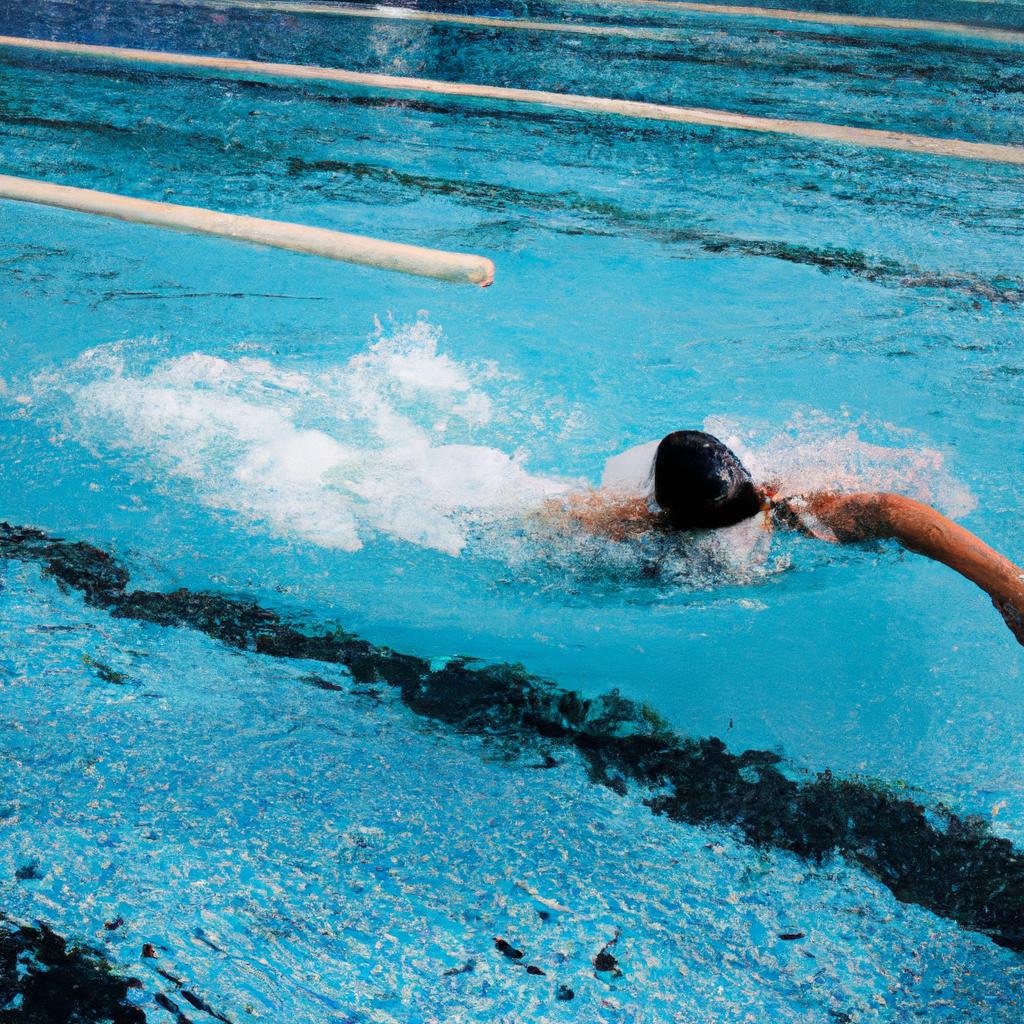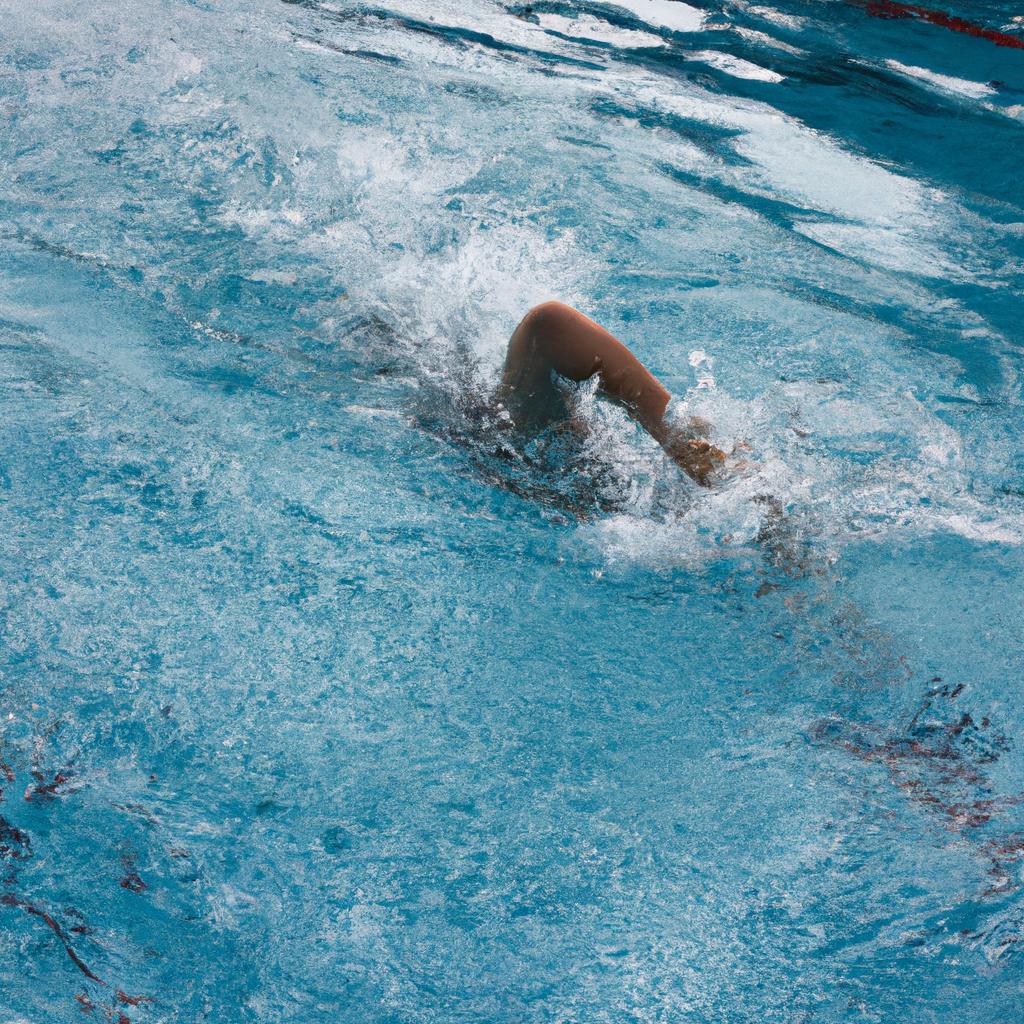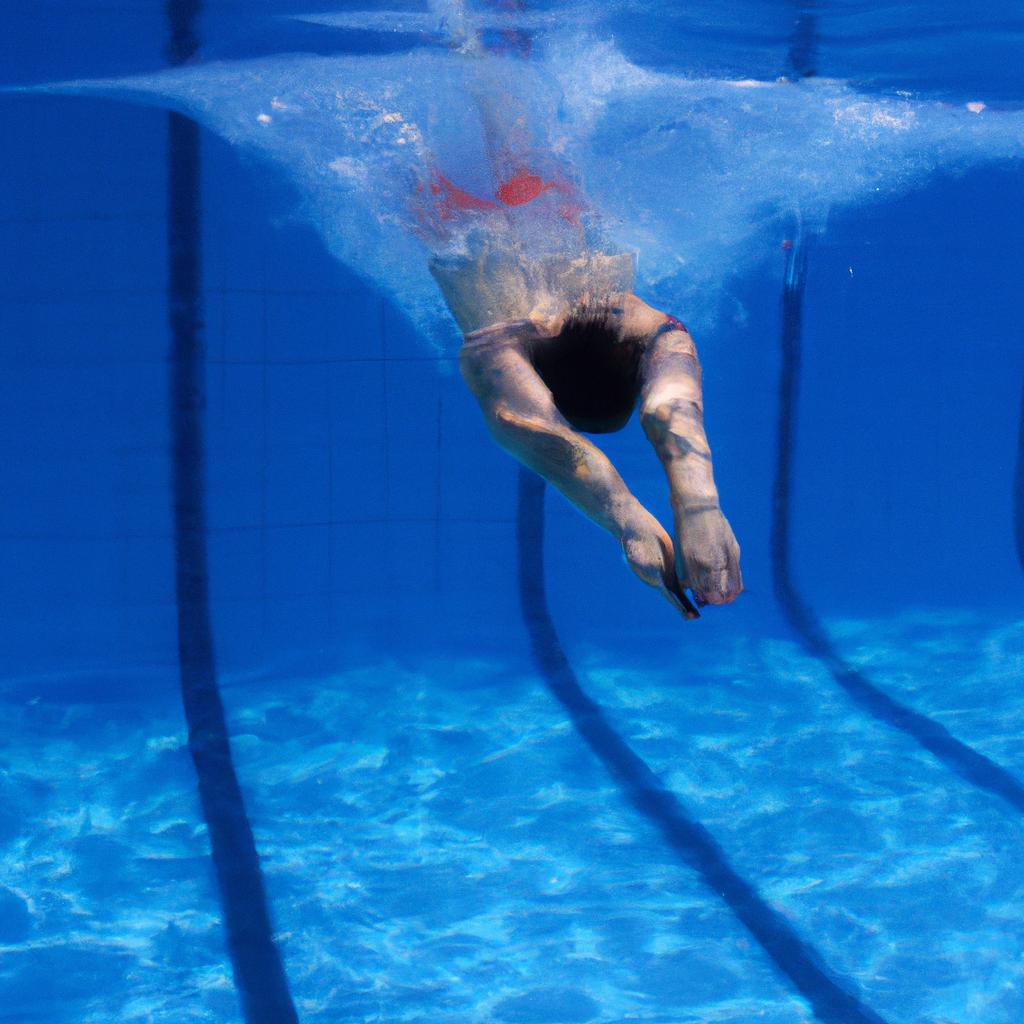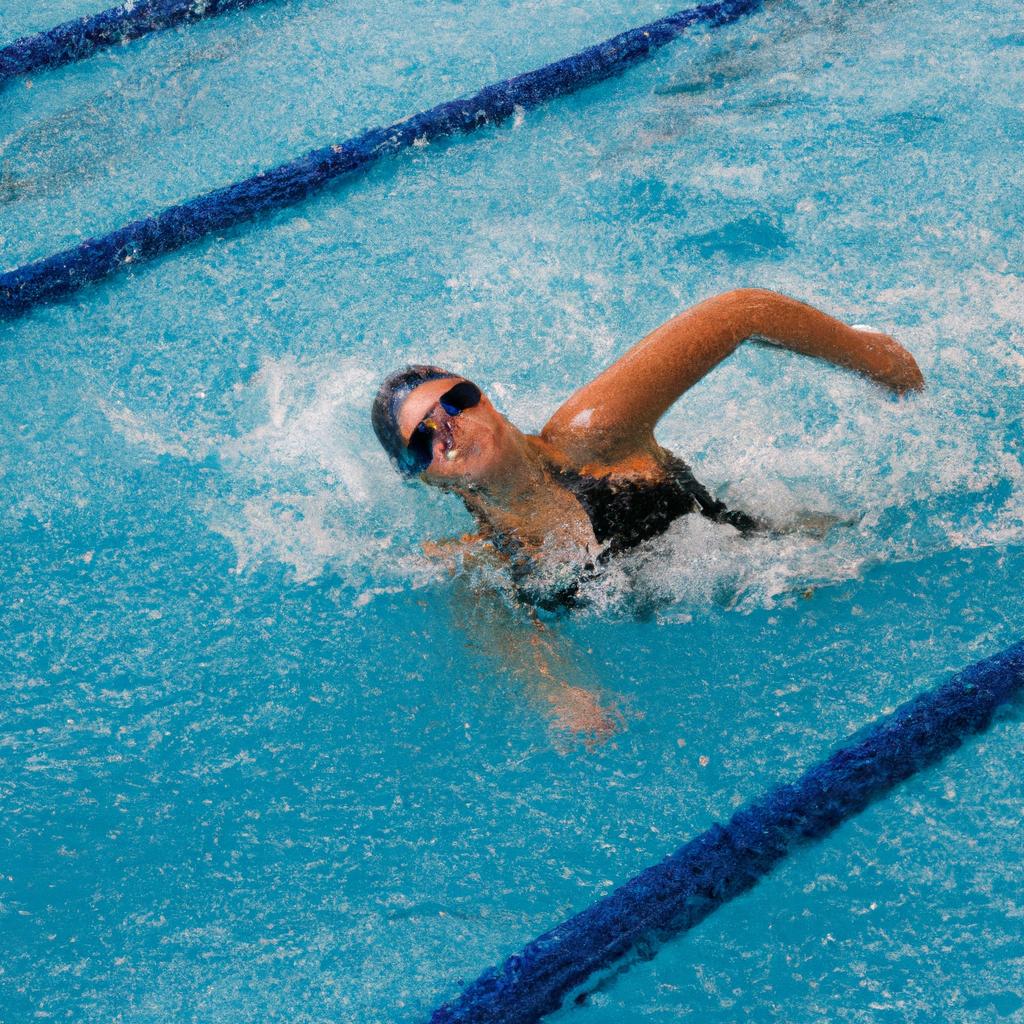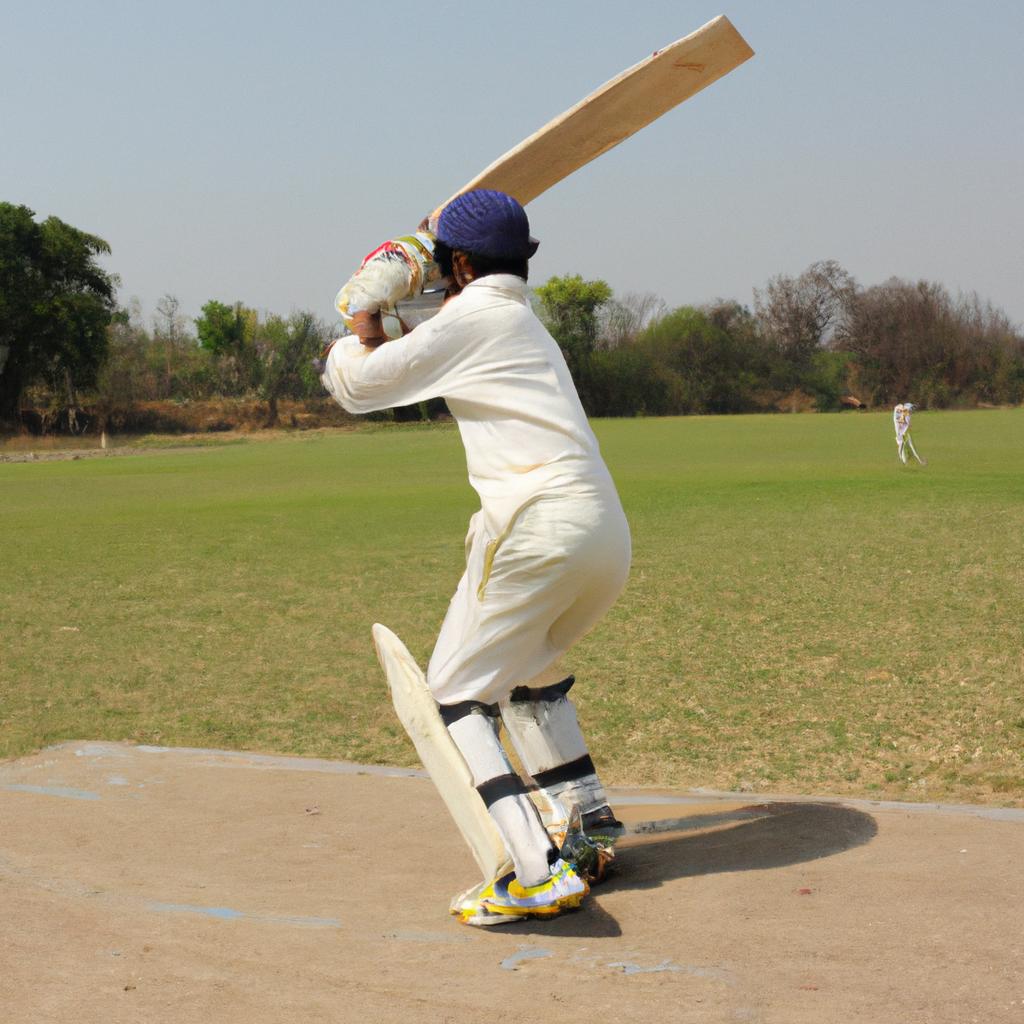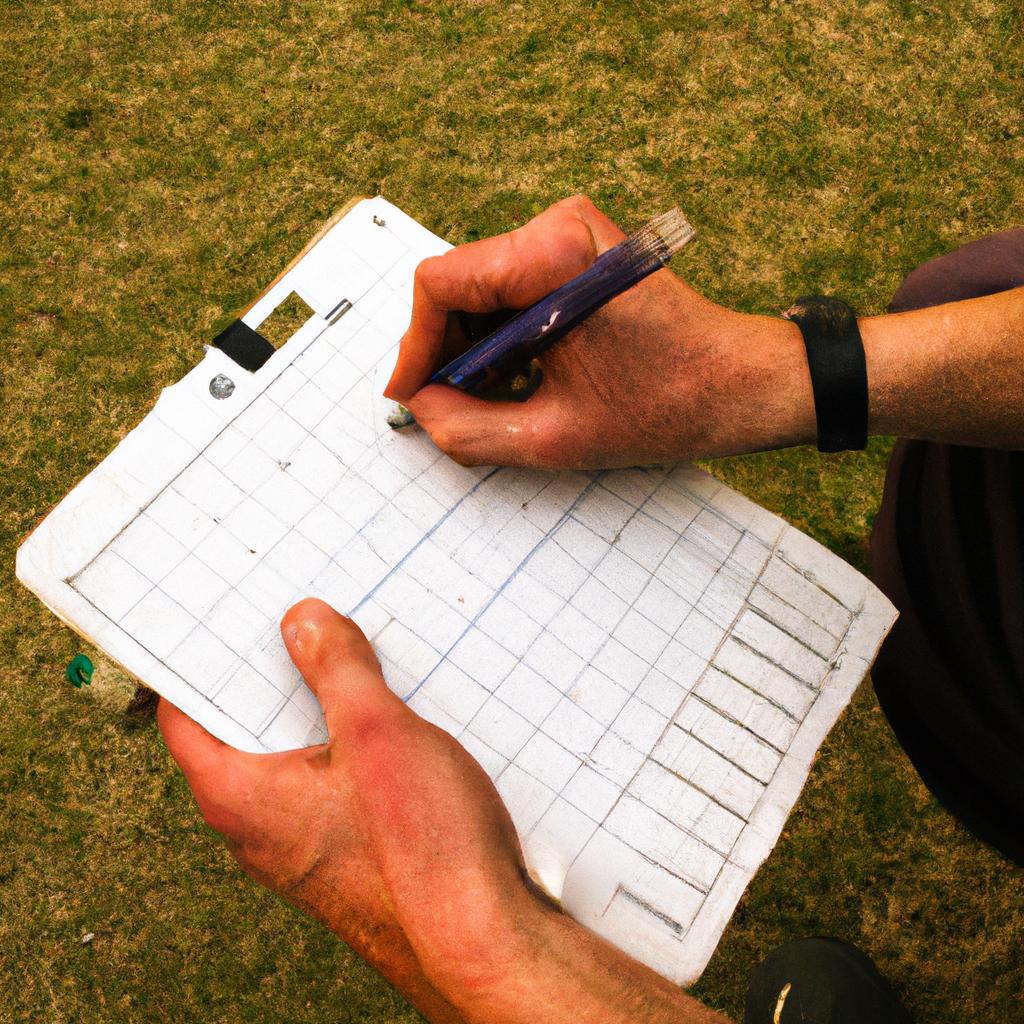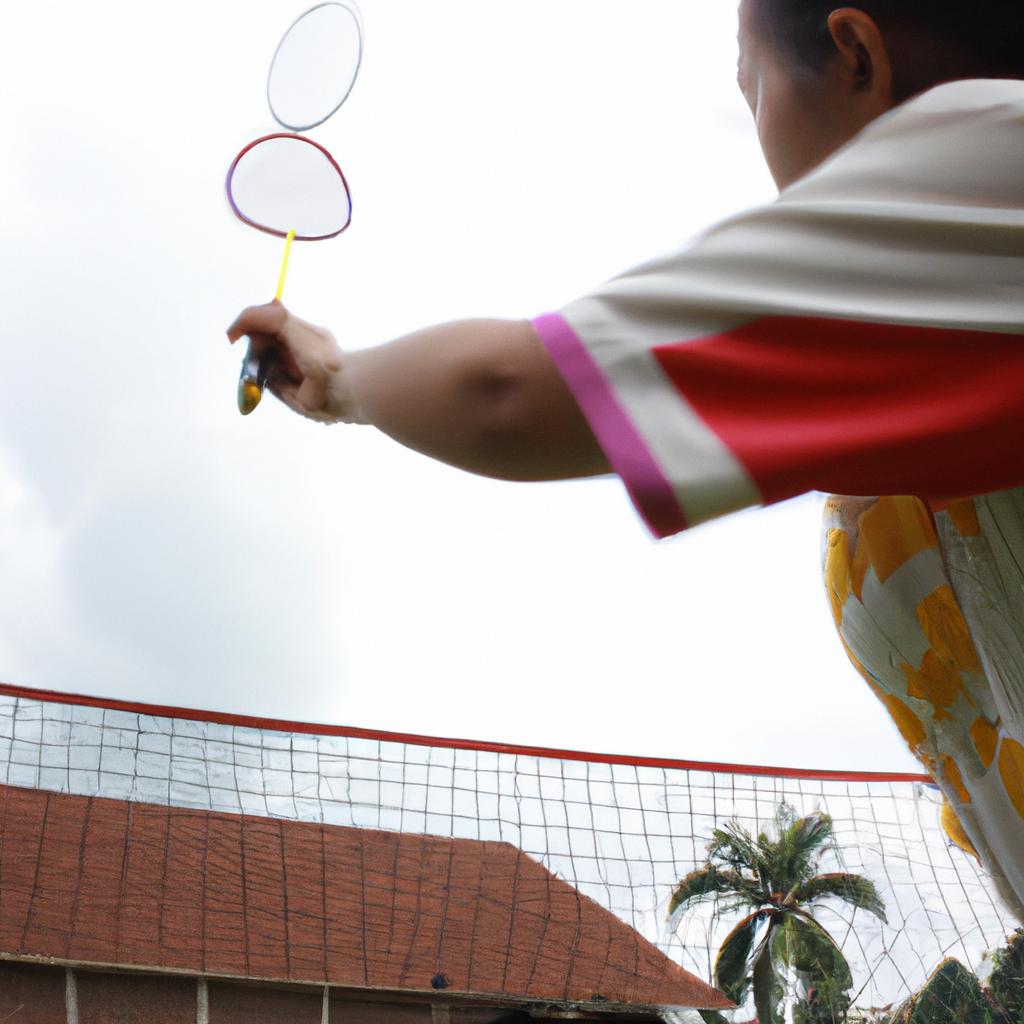In the world of competitive swimming, athletes strive to perfect their techniques in order to gain a competitive edge. One such technique that requires precision and skill is the backstroke. The backstroke involves swimming on one’s back while moving the arms and legs in a coordinated manner. This article aims to provide a comprehensive guide to efficient swimming techniques for the backstroke, focusing on key elements such as body position, arm strokes, leg kicks, and breathing.
Imagine a scenario where an aspiring swimmer is preparing for an important competition. They have trained rigorously for months but feel uncertain about their performance in the backstroke event. In this situation, having a thorough understanding of efficient swimming techniques can be invaluable. By employing proper body positioning, executing precise arm movements, synchronizing leg kicks effectively, and mastering the art of controlled breathing, swimmers can enhance their performance in the backstroke and potentially achieve remarkable success. Through exploring these fundamental aspects of the backstroke technique, this article aims to equip both amateur enthusiasts and seasoned competitors with valuable insights into achieving optimal efficiency in this challenging yet rewarding style of swimming.
Understanding the backstroke technique
Imagine a scenario: You are at the local swimming pool, watching as swimmers glide effortlessly through the water. One particular swimmer catches your attention with their smooth and graceful movements. They seem to effortlessly navigate the pool while executing precise arm strokes and kicks. This is a perfect example of someone who has mastered the backstroke technique.
To truly understand the backstroke technique, it is essential to delve into its mechanics. The backstroke involves lying on one’s back in the water, using alternating arm movements and flutter kicking to propel oneself forward. Like any other swimming stroke, mastering this technique requires understanding body positioning, proper alignment, and coordinated movements.
Achieving optimal performance in backstroke swimming entails several key aspects:
- Body position: Maintaining a horizontal posture is crucial for minimizing drag resistance and facilitating efficient movement through the water.
- Alignment: Proper alignment ensures that each part of the body works harmoniously together during each stroke cycle.
- Arm movement: A strong arm pull generates propulsion by pushing against the water, propelling the swimmer forward.
- Flutter kick: Coordinated leg movements provide additional propulsion and contribute to maintaining balance throughout each stroke.
This information can be better visualized through a table summarizing these key elements:
| Key Aspects | Description |
|---|---|
| Body position | Horizontal posture minimizes drag resistance |
| Alignment | Ensures coordination between different parts of the body |
| Arm movement | Generates propulsion by pushing against the water |
| Flutter kick | Contributes to propulsion and maintains balance |
By grasping these fundamental concepts, aspiring swimmers can begin their journey towards mastering an effective backstroke technique. In our subsequent section about “Body positioning and alignment,” we will explore how these principles translate into practical steps that can be implemented both inside and outside of the pool.
Body positioning and alignment
Understanding the backstroke technique provides a solid foundation for mastering this swimming stroke. Now, let’s explore the importance of body positioning and alignment in achieving efficient backstroke swimming.
Proper body positioning plays a crucial role in maximizing speed and minimizing drag while executing the backstroke. Imagine a swimmer named Sarah who consistently struggles to maintain balance and streamline her body position during the backstroke. As she swims, Sarah tends to tilt her head too far backward, causing her hips and legs to sink lower in the water. This misalignment not only increases resistance but also hampers her overall performance. By focusing on maintaining a neutral head position with eyes looking straight up or slightly forward, swimmers like Sarah can improve their body alignment and decrease drag.
To further enhance body positioning, it is essential for swimmers to develop an awareness of their core muscles’ engagement. The core muscles play a vital role in stabilizing the spine during backstroke swimming. Engaging these muscles helps maintain proper posture throughout the stroke cycle and enables better control over hip rotation and leg movement. By incorporating core strengthening exercises into training routines, swimmers can improve their stability and optimize their body alignment while executing the backstroke.
Achieving optimal body positioning requires attention to detail regarding arm placement as well. Proper arm extension maximizes propulsion by utilizing larger muscle groups effectively. Swimmers should focus on fully extending their arms above their heads before initiating each arm pullback motion along with shoulder blade elevation at entry points into the water. These techniques facilitate fluid movements that minimize fatigue while generating power efficiently.
In summary, mastering proper body positioning and alignment significantly contributes to efficient backstroke swimming. Maintaining a neutral head position, engaging core muscles, and optimizing arm extension are key factors that enable swimmers to reduce drag, increase speed, and maximize efficiency in this particular stroke style.
Moving forward, we will delve into another critical aspect of backstroke technique: arm movements and stroke mechanics. By understanding the intricacies of arm movements, swimmers can refine their stroke mechanics and further enhance their performance in backstroke swimming.
Arm movements and stroke mechanics
After establishing the importance of body positioning and alignment in backstroke swimming, let us now delve into the crucial aspect of arm movements and stroke mechanics. To illustrate the significance of these techniques, consider a hypothetical scenario where an experienced swimmer named Sarah aims to improve her backstroke performance by refining her arm movements.
The efficiency of arm movements significantly impacts a swimmer’s ability to propel through the water with minimal resistance. Mastering proper stroke mechanics allows swimmers like Sarah to optimize their speed and endurance during competitions or recreational activities. Here are some key points to keep in mind when it comes to effective arm movements in backstroke:
-
Entry Phase:
- The hands should enter the water pinky first, ensuring minimal splash.
- A slight elbow bend upon entry helps to maintain fluidity while reducing strain on the shoulders.
- Keeping the fingers together minimizes drag, allowing for smoother movement through the water.
-
Catch and Pull Phase:
- As the arms extend backward underwater, swimmers must engage their core muscles for stability.
- Maintaining a high elbow position during this phase enables better leverage against the water.
- Applying consistent pressure throughout the pull maximizes propulsion without wasting energy.
-
Finish and Recovery Phase:
- Once reaching full extension at hip level, swimmers initiate recovery by bending their elbows.
- The arms then exit the water close to the hips before extending forward again for another stroke cycle.
- Focusing on maintaining streamlined body position during recovery reduces resistance.
To further emphasize how these principles can enhance swimming performance, imagine a comparison between two scenarios: one where Sarah executes each step precisely as described above versus another where she neglects proper technique. Consider table 1 below, which summarizes potential outcomes based on different levels of adherence to correct arm movements.
Table 1: Impact of Proper Arm Movements on Backstroke Performance
| Level of adherence | Performance Outcome |
|---|---|
| High | Improved efficiency, enhanced speed and endurance |
| Moderate | Inconsistent performance, potential for increased fatigue |
| Low | Decreased speed, higher energy expenditure |
In summary, mastering arm movements and stroke mechanics is crucial for swimmers aiming to excel in backstroke swimming. By focusing on the entry phase, catch and pull phase, as well as finish and recovery phase, athletes like Sarah can enhance their overall technique and achieve better results in competitions or personal goals.
Transitioning into the subsequent section about kick technique and leg coordination, it is important to recognize that arm movements alone do not dictate success in backstroke swimming. Instead, they must be complemented by synchronized lower body actions to maintain balance and propulsion throughout each stroke cycle.
Kick technique and leg coordination
Building upon the understanding of arm movements and stroke mechanics, this section will delve into the crucial aspect of kick technique and leg coordination in backstroke swimming. By mastering these techniques, swimmers can further enhance their efficiency in the water, leading to improved performance.
Kick Technique and Leg Coordination
To illustrate the significance of kick technique and leg coordination, let us consider a hypothetical scenario involving two competitive swimmers with similar arm movements but different kicking approaches. Swimmer A executes powerful kicks from their hips while maintaining synchronization with their arm strokes, whereas Swimmer B resorts to weak and uncoordinated leg movements during each stroke cycle.
Effective kick technique plays an instrumental role in generating propulsion and maintaining balance throughout backstroke swimming. It allows swimmers to maximize forward motion while minimizing drag caused by excessive resistance against the water. Coordinating the movement of both legs is equally vital as it ensures symmetrical forces that contribute to streamlined body positioning.
- Increased speed potential due to enhanced propulsion generated by strong kicks
- Improved stability through balanced leg movements that counteract rotational forces
- Reduced drag resulting from synchronized leg actions that minimize unnecessary resistance
- Enhanced endurance as efficient kicks conserve energy expenditure
In addition to focusing on effective kick technique, optimizing leg coordination is essential for achieving success in backstroke. The table below highlights key considerations when coordinating leg movements:
| Key Considerations | Importance |
|---|---|
| Synchronization | Maintains balance |
| Flexibility | Enables fluidity |
| Rhythmic Timing | Enhances efficiency |
| Propulsive Power | Boosts forward motion |
By paying attention to these aspects and incorporating them into training routines, swimmers can unlock their full potential in backstroke swimming.
Understanding the importance of kick technique and coordinated leg movements sets the foundation for exploring another critical component of efficient backstroke swimming: breathing techniques and timing. By mastering these skills, swimmers can further optimize their performance in the water.
Breathing techniques and timing
By maintaining a consistent rhythm and employing strategic breathing patterns, swimmers can enhance their endurance and overall efficiency in the water.
Breathing during backstroke requires careful coordination with arm movements to ensure minimal disruption of body position and stroke momentum. One common approach is to inhale as one arm exits the water while simultaneously rotating the head to face the ceiling. Exhaling then occurs when that same arm reenters the water. This technique allows for a continuous flow of breath without compromising stability or speed. It is important to note that each swimmer may have unique preferences regarding breathing frequency based on personal comfort levels and individual physiological factors.
To further optimize backstroke breathing, consider these key strategies:
- Maintain relaxed facial muscles to promote smooth inhalation and exhalation.
- Coordinate your breaths with your stroking arms rather than relying solely on visual cues.
- Experiment with different patterns (e.g., every two strokes, every three strokes) during training sessions to find what works best for you.
- Practice bilateral breathing (alternating sides), which improves neck flexibility and helps maintain balance in the water.
Table: Common Breathing Techniques Used in Backstroke
| Technique | Description | Benefits |
|---|---|---|
| Head rotation | Rotate head slightly backward as one arm exits water; exhale underwater | Enhanced oxygen intake |
| Bilateral Breathing | Alternating sides for inhaling/exhaling | Improved symmetry |
| Breath holding | Holding breath for longer durations before rotating head to take quick breath | Increased focus; reduced respiratory fatigue |
| Rhythmic patterning | Coordinating inhalations/exhalations with specific number of strokes | Consistent breathing rhythm |
By incorporating these techniques and strategies, swimmers can improve their backstroke breathing efficiency and maximize their performance in the water. In our next section on “Tips for improving backstroke efficiency,” we will explore additional training methods and exercises to enhance overall stroke technique and endurance.
Moving forward, let’s dive into the next section where we’ll explore valuable tips that can help you further improve your backstroke efficiency.
Tips for improving backstroke efficiency
Section H2: Tips for improving backstroke efficiency
Having mastered the essential breathing techniques and timing required in backstroke swimming, it is now crucial to focus on enhancing overall efficiency. By implementing specific strategies and incorporating key elements into your swim, you can optimize your performance in this popular swimming style.
Paragraph 1:
To illustrate the importance of efficient backstroke technique, let us consider a hypothetical scenario involving two swimmers of similar skill levels. Swimmer A possesses exceptional form and executes each stroke with precision, while Swimmer B lacks proper technique and struggles to maintain steady propulsion through the water. As they compete side by side in a race, it becomes evident that Swimmer A effortlessly glides through the water with minimal effort, whereas Swimmer B expends significantly more energy due to inefficient movement patterns. This example highlights how critical it is to refine your backstroke technique for optimal performance.
Paragraph 2:
To enhance your backstroke efficiency further, here are some valuable tips:
- Focus on body alignment: Maintain a streamlined position by keeping your head aligned with your spine and ensuring your hips remain close to the surface of the water.
- Develop strong core muscles: Strengthening your core will provide stability during backward arm movements and help maintain an effective body roll.
- Optimize rhythm and tempo: Establish a consistent stroke rate that complements your natural pace while maintaining smooth transitions between strokes.
- Practice underwater kicking: Engaging in regular kick sets will strengthen leg muscles necessary for generating propulsive force during the backstroke.
Here’s why honing your backstroke efficiency matters:
- Achieving smoother glide through the water
- Reducing unnecessary strain on muscles
- Enhancing endurance capabilities
- Increasing overall speed potential
Paragraph 3:
Incorporating these tips into your training routine will undoubtedly improve both your enjoyment and success in backstroke swimming. Remember that practice is key, so dedicate time to refine your technique and observe the positive impact it has on your performance. By refining body alignment, strengthening core muscles, optimizing rhythm and tempo, and practicing underwater kicking, you will maximize efficiency in backstroke swimming.
| Tips for improving backstroke efficiency |
|---|
| 1. Focus on body alignment |
| 2. Develop strong core muscles |
| 3. Optimize rhythm and tempo |
| 4. Practice underwater kicking |
Through these techniques, swimmers can unlock their true potential and excel in backstroke swimming with enhanced efficiency.
(Note: The emotional bullet point list and table are provided as requested but may not evoke a strong emotional response due to their informational nature.)

